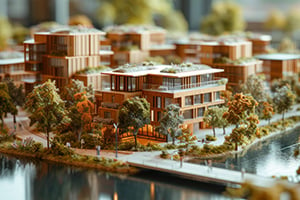By Ariana Nieves,
Marketing Coordinator
Sustainable Investment Group (SIG)
What is Building Electrification?
Building electrification is the switch from fossil fuels to clean electricity for cooking and heating. Electrification can help to reduce energy use and greenhouse gas emissions. Currently, buildings in the United States account for 28% of emissions. Seventy million American homes and businesses utilize fossil fuels such as gas as their primary cooking and heating sources; this produces 600 million tons of carbon dioxide every year.
President Biden curated a climate plan in 2020 that aims to reduce 50% of the U.S. building stock carbon footprint by 2035. Building electrification is a vital way to stay on track and reach the country’s goals. Many state have begun the transition and have been implementing building electrification policies for the past year.
What the U.S. is Currently Doing to Strive Towards its Goal
Several states and cities passed new legislation and reformed building codes to switch to clean electricity. Forty jurisdictions in California have enacted policies to restrict the use of gas-powered appliances in new buildings.
New York stopped promoting the use of gas and began focusing on reducing consumption and adopting clean electricity. Seattle, Washington announced an updated energy code to eradicate fossil fuel usage for heating in large multifamily construction and new developments.
Additionally, many states conceptualized plans of action to continue moving towards reduced fossil fuel utilization. New Jersey set a goal to electrify 90% of its buildings by 2050, and Maine aims to install 145,000 heat pumps by 2025. Colorado, Michigan, and Nevada all enacted action plans as well.
A handful of U.S. states also curated task force groups; to focus on planning and enforcing new solutions toward increased electrification. Connecticut, Maryland, and Wisconsin are among those that have begun making suggestions such as updated building codes.
Through these efforts, the U.S. is moving towards the President’s goal and paving a way towards reduced carbon emissions.
How Building Electrification Can Help with LEED Certification
Building electrification is a viable way to achieve the renewable energy LEED credit worth up to five points. The purpose of the credit is to reduce the economic and environmental effects of fossil fuel usage and decrease greenhouse gas emissions. As well as transition to a renewable clean energy source (such as clean electricity) and encourage a green economy.
There are a couple of requirements necessary to achieve the credit. One example is the use of on-site or off-site renewable energy that should account for at least a portion of the building’s yearly energy use. To see more requirements listed by the USGBC visit: https://www.usgbc.org/credits/new-construction-core-and-shell-schools-new-construction-retail-new-construction-data-34
Overall, building electrification is a technique that is becoming very useful and relevant in the sustainability world. Many states in the U.S. are currently utilizing it to reduce greenhouse gas emissions and help bring the country closer to a greener future.
Sources:
https://rmi.org/2020-watt-a-year-for-building-electrification/
https://rmi.org/eight-benefits-of-building-electrification-for-households-communities-and-climate/
© 2022 Sustainable Investment Group (SIG). All rights reserved.



